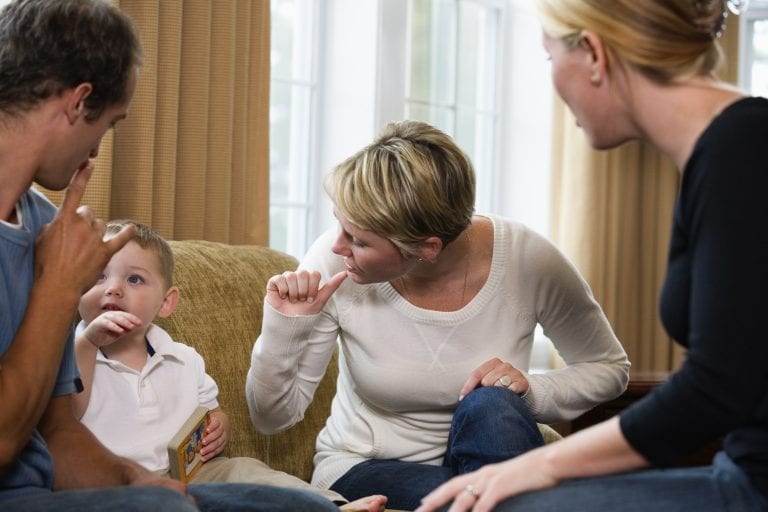Start Talking with Baby through Sign Language
Muhh muhh muhh. Da da da. You anxiously await baby’s first words. Yet there’s no reason to wait. Start talking with baby through sign lauguage.
Start communicating with American Sign Language, adapted for babies and toddlers, before baby’s first birthday.
Repeat after Me: What’s Your Sign?
Language is taught through repetition; so are baby signs. As early as age 6 months, babies can understand simple signs including their desire for milk, food, sleep—even a pacifier, says Joseph Garcia, an American Sign Language (ASL) interpreter. His research shows that babies ages 6-7 months who watch their parents sign can begin to use those signs by their 8th or 9th month.
If you’re concerned that learning signs will delay baby’s talking, push that fear aside. Research shows baby sees your signs more so as gestures—movements that go with your sounds and actions. Babies who are consistently exposed to infant signs tend to speak earlier and develop a larger vocabulary. Having a physical way to express a need can calm baby once they start to use simple sign language.
Ready to See Signs?
Does baby follow your gestures with their eyes? Try to move their hands and arms like you do? Your baby may be ready to learn to sign. Simply do a sign with your hands as you say the word and do the action. Use the same sign with the same word and action every time.
More is typically baby’s first learned sign, parents say. Tap your fingers together in front of your body and ask if baby wants more. Speak the word as you do the sign.
Whether your baby picks signing up right away or simply seems entertained, just have fun with it. Each baby will learns on their own schedule; you may need to make signs for quite some time (read months!) before you see baby trying to mimic your actions.
SEE ALSO: Read aloud to Baby
Baby’s First Signs
More: With both hands, tap your pinched fingers together in front of you
Eat: With one hand, bring your pinched fingers to your mouth
Drink: Cup a hand as if making the letter “C;” raise your cupped hand to your lips and down again, repeat
Milk: Hold your fist up, as if grasping a mug. As you raise it up and down, open and close your fingers, as if milking a cow
All done: Hold both hands in front of you, palms facing out and move them in opposite directions out and in again, repeat
Yes: Hold one fist up, knuckles level on top of your hand; rock your fist up and down
Book: Hold your hands palms together, fingers pointing to baby; open them thumbs leading out while the bottoms of your hands remain touching, as if opening a book
Thank you: Place your hand, fingers closed, palm down on your lips, let your hand fall naturally forward from your mouth until your fingers are pointing at baby
Sleep: Place your whole hand, fingers splayed, over your face—covering your eyes. Pull your fingers together in a pinch as you drag your hand down your face, ending with your fingertips on your chin.
I Love You: Hold your hand in front of you, fingers open and thumb extended; fold down the two fingers between your index and pinky fingers.
After reading Start Talking with Baby through Sign Language go to Babies Learn Language in Womb






Comments are closed.